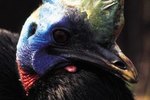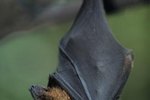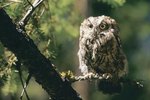
Quail species distribution presents a bit of a riddle. While all 15 or so quail species prefer to inhabit forests and woodlands, each quail variety displays slightly different features resulting from the birds' environmental adaptations. During mating season, quail often gather with family groups that can reach 100 birds. Quail are fast offspring producers, capable of mating at 2 months of age and hatching eggs in less than a month's time.
Bobwhite Quail
Bobwhite quail, the most common quail species, have achieved notoriety for their memorable "bob-white" call. Bobwhites also hold the distinction as the top game bird of the southern and eastern United States. Wildfowl hunters flush bobwhite quail from habitats that include brush, fields, woods and weeds east of the Rocky Mountains. This far-ranging bird species has established a footprint beyond the United States, as bobwhite quail also inhabit Canada and Mexico.
Button Quail
Button quail have scratched out a distinctive niche among bird breeding enthusiasts. Chinese painted quail, the most commonly kept button quail species, originated in southeast Asia, Australia and Africa. These smallish quail adapt well to outdoor aviaries, or bird habitats, where they scour the enclosures' floors for seeds. Button quail also romp in branches on aviary floors and often take dust or sand baths to clean themselves. These quiet, agreeable birds mesh well with other aviary dwellers, making button quail desirable for large and small enclosures.
Japanese Quail
Quail farmers have discovered Japanese quail, often found in large numbers in east Asian habitats. In the United States, niche farmers raise Japanese quail for their eggs, considered a delicacy in many restaurants and among a growing number of consumers. While Japanese quail prefer grassland environments, these speckled brownish birds adapt quite well to enclosures that include sand for dust baths and bushy branches for camouflage.
California Quail
California quail are well adapted to California's chaparral, coastal sagebrush and high desert habitats. These skittish birds scratch along the ground in groups, sounding a distinctive “chi-ca-go” call as they move along. California quail maintain a 70 percent vegetarian diet that includes seeds, flowers, leaves and birdseed from convenient backyards. These opportunistic birds also consume mites, beetles and caterpillars. This arid-habitat quail species often gathers moisture from insects and water-containing vegetation. During long, blistering heat waves, California quail must find drinking water as well.
References
Photo Credits
-
Jupiterimages/Photos.com/Getty Images
Writer Bio
Based in North Carolina, Felicia Greene has written professionally since 1986. Greene edited sailing-related newsletters and designed marketing programs for the New Bern, N.C. "Sun Journal" and New Bern Habitat ReStore. She earned a Bachelor of Science in business administration from the University of Baltimore.




